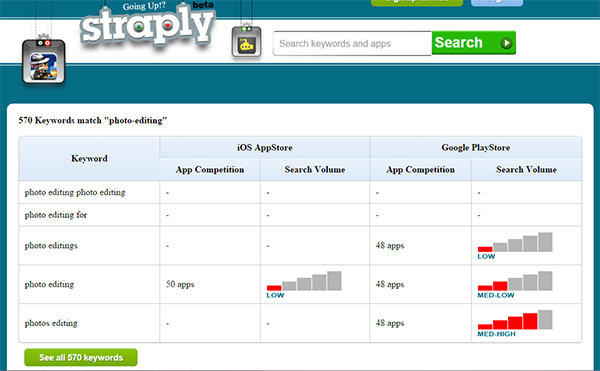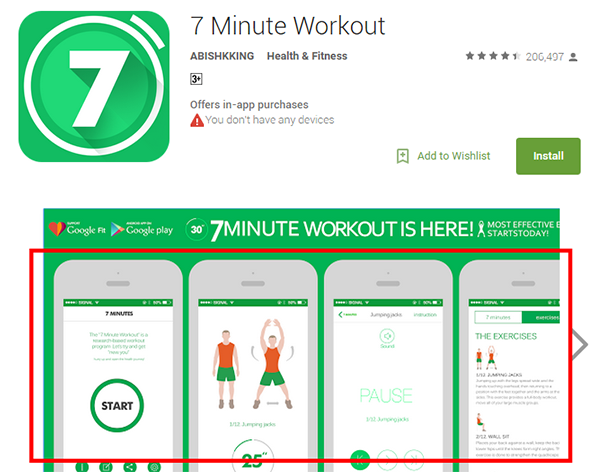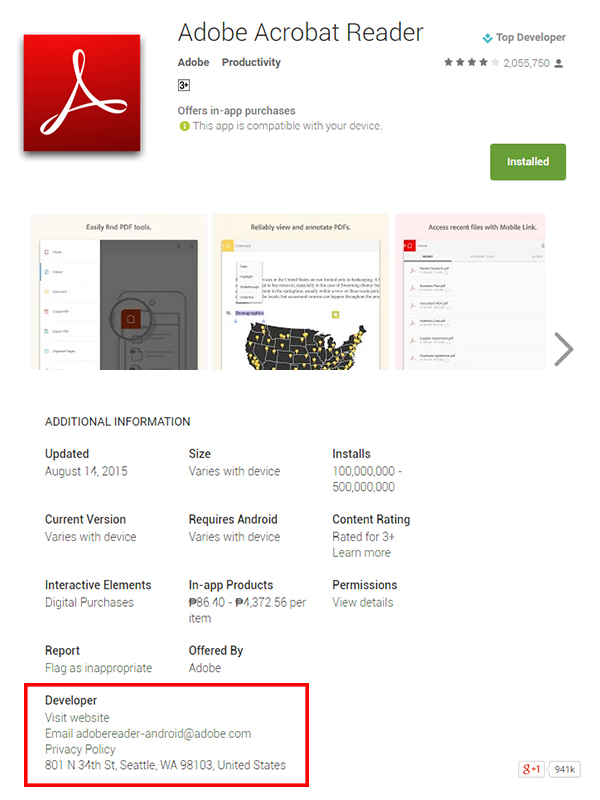How to Optimize Your Mobile App for App Stores
I was trying to download a photo editing app when I saw how many applications were available out there. And then it made me wonder.
How do we know which one to choose?
With over 2 million mobile apps in app stores, being seen and downloaded are the real challenges that app developers are facing right now.
Yes, the competition is really high, that’s why app developers should look for ways to be on top of the list. And that’s what App Store Optimization is for.
What is App Store Optimization?
App Store Optimization (ASO) is the process of optimizing mobile applications with the aim to rank high in app store’s search results for a better chance of getting downloaded. Just like the goal of both SEO and CRO.
What’s fun with ASO, and I think more challenging, is the fact that the goal is not just to get traffic but to get actual and good number of installations.
How to Optimize Your Mobile App for App Stores?
So, to help you with optimizing your mobile applications, here are some aspects that you need to consider reviewing.
1. Keywords
Whether you’re just starting to build an app or it’s already available in app stores, having a list of target keywords is very important.
But try not to guess which keywords to target.
To improve your rankings, it’s helpful to know the actual keywords that users are searching for.
A tool like Straply can definitely guide you with that. Although still in beta, this can help you gauge keyword competition and search volume both for iOS and Google.
You may also use keyword tools like Google Adwords Keyword Planner, and Keyword Tool, which are usually used for SEO, for the reason that majority of users are still using search engines like Google and Bing to search for applications.
Note: Keyword research is important for coming up with a great title and description, but avoid keyword stuffing.
2. Title or App Name
The best bit about app publishing is that you can always change your title and keywords, meaning you can optimize it from time to time. However, it can also be a bad thing, and will only complicate things when abused.
As your app begins to be discovered, and more people start recognizing and sharing your app, changing your title may give them a hard time finding you.
The best thing to do is to get serious with your keyword research, and spend time understanding what your app is all about.
Don’t be afraid to test a few titles, and keywords, but once you see significant increase in traffic and downloads, then stick to that title.
3. Description
Description is another part that you can optimize and where you can put the best keywords which are relevant to your app’s purpose. But always remember that users are human, and the main reason why they’re checking your description is because they want to make sure that you’re exactly what they’re looking for.
The point? Do not stuff it with keywords.
4. Icon
While title and description are both very important parts of ASO, icons are without a doubt the first thing that users see, and one of the main reasons for clicking on your app.
Here are best practices when creating app icon:
- Keep it simple. Don’t put too much elements with your icon. You can choose the main character (if it’s a game) or your logo (if it’s services or utility apps) for your main element.
- Don’t include words. An icon is supposed to be an identifier, you shouldn’t need dry words. Always remember that an icon is a graphical representation of a word, idea, concept or operation.
- Use soft color for your background, because your main element should be the highlight.
5. Screenshots
One thing that I always notice with apps’ screenshots is the usage of logo, or simple in-app shots. That’s boring!
Screenshots are meant to show what your app is all about – the actual experience.
The actual story.
If it’s a utility app, you may showcase its tools, or the key features. For example, if it’s a photo editing app, it will be great to include the exact filter, and how it looks like. If it’s a workout tool, you may show exactly how it works.
If it’s a game app, pick the most epic scenes, or the most exciting part of the game. By doing that you’re giving your potential users a sneak peek, which will help them better understand what your game is all about.
6. Competitor analysis
Competitor analysis, just like with SEO, can definitely help you get a better understanding of your competition. Analyze your competitors’ titles, descriptions, keywords, icons and screenshots.
Then ask yourself, “what’s making them rank?”
You don’t have to copy their style, you just need to know what’s keeping them from the top, so that you may apply the same strategies. You also need to get a gist of their weaknesses, so you can avoid them.
7. Category
You can choose many categories, or sub-categories, but the truth is it’s never a wise thing to do.
Choosing the most appropriate category for your app is the best way to reach your target market, and to help users to have a better sense of what your app is for. Also, choosing the right category will give you a better chance of being in the related or relevant app section for that category.
8. Reviews
While reviews are something that you can’t control, the best thing that you can do is to read users comments or experiences very carefully. Learn from these feedbacks, and improve your app.
Take time as well to reply to all the reviews, especially those with negative feedbacks.
9. Support through website or social media
As a user, I want to make sure that if I have a problem with the app I downloaded, especially if it’s a paid app, there’s a customer support that can assist me. That’s why before I download anything, I always check if there’s a website, email address or links to social accounts included.
While it doesn’t entirely affect ASO, it’s human nature to look for support page if things go wrong. Besides, having website and social media accounts can also help you not just with customer support, but a way to promote your app, and to share recent developments.
Conclusion
We’re living in a time when people are very dependent with applications, tools and softwares. But with tons of apps and tools available for us to download, the competition is getting steeper. And it’s not enough that you have a great invention – it has to be discovered!
While ASO is very new, and still being studied and tested, doing it now will surely help you in the long run.
Have you tried ASO for your mobile applications? Share us your experience by commenting below!




